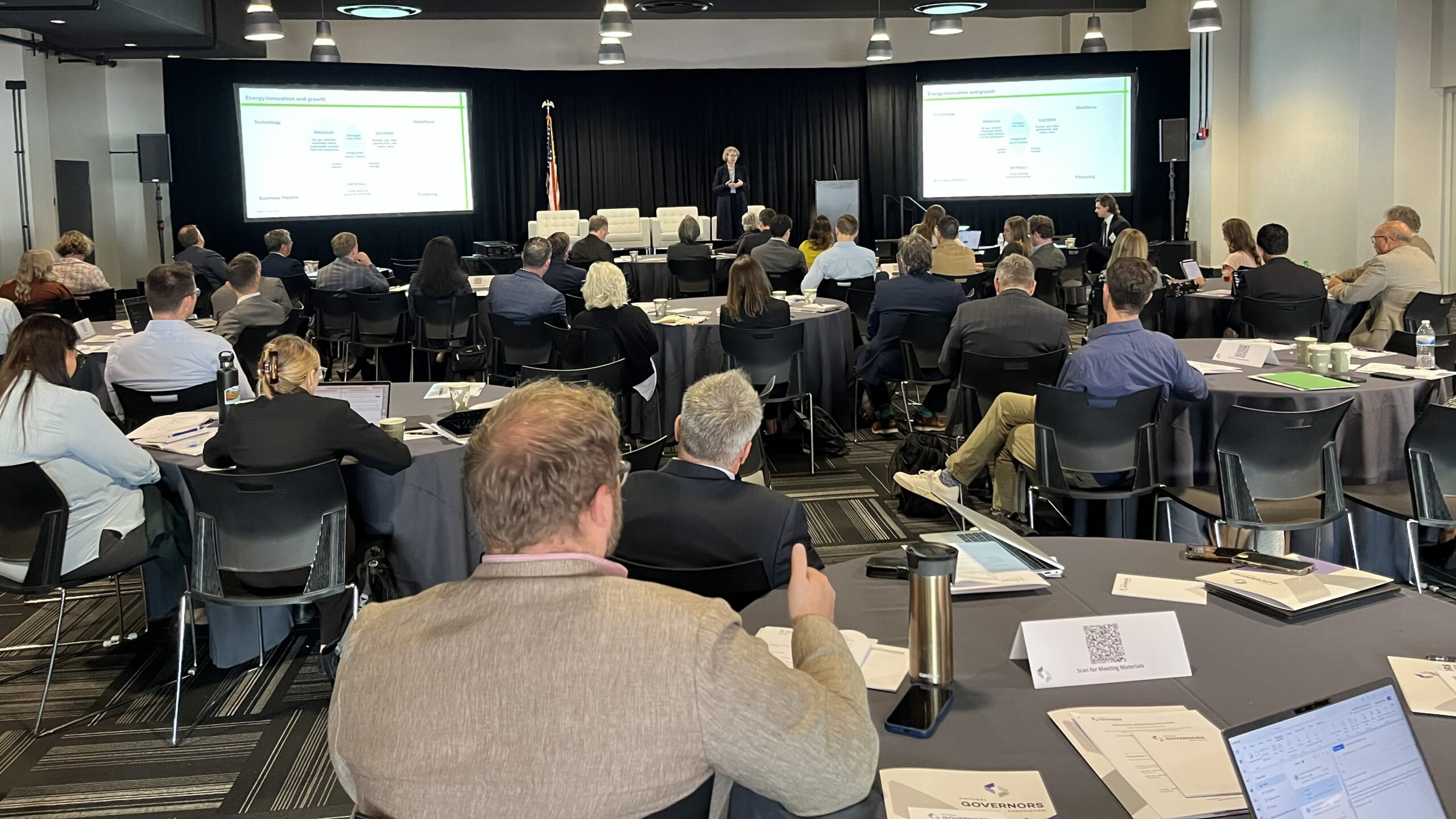Governors are looking to drive cost- and time-efficient solutions that mitigate workforce strain and improve seamless service delivery but navigating the universe of available products while balancing procurement requirements with evolving needs and priorities can be a challenge in this era of breakneck innovation. At the 2025 NGA Health and Human Services Institute, speakers talked about all things tech systems during the Making Innovative Tech Work for Health & Human Services session.
Session speakers included Nikhil Deshpande, the Chief Digital and Artificial Intelligence Officer with the Georgia Technology Authority, Kaye Sklar, the Senior Program Manager for Content and Insights with Open Contracting Partnership, and Joshua Rivera, Benefits Access and Equity Program Fellow with the Families and Workers Fund. The session was moderated by Kristi Putnam, a Senior Advisor with Center for Civic Futures. Speakers first discussed the gap between the “hype” and the “realities” of AI:
- The Myth: “Everyone has it all figured out”: technology leaders creating this technology and state staff spearheading implementation have a concrete understanding of it’s impact, design, and future.
- The Reality: Both technology and state leaders are still building the plane as they’re flying it, and most states and territories are purchasing AI technology through pilots, rather than large-scale solutions.
- The Myth: AI can solve everything, no matter what is thrown at it
- The Reality: AI can’t “think” for itself: it’s a technology that runs on the information provided, and leaders need to be intentional about creating realistic use cases for the tool It’s important to always test for “hallucinations” – it can be helpful to ask questions within your expertise to determine whether a model is accurate. “It’s a tool. You wouldn’t ask your power drill for medical advice” (Nikhil)
Incorporating AI into States & Territories Human Services:
Over the course of the panel, panelists offered tangible recommendations to states and territories interested in deploying artificial intelligence solutions in their health & human services agencies.
Understand the impact on workers: In Georgia, the Technology Authority identified a few key roles (caseworkers, legal, HR, etc.) and mapped out ways that AI could supplement the duties of each job.
Automate tedious tasks:
- Technology can mitigate the pain points of human services work, like information gathering or rote memorizations of definitions – calling out the work of coding-academy Code the Dream to help case managers better navigate policy manuals
- AI is great for pulling information out of PDFs, a notoriously annoying task
Be intentional about procurement practices: “Good AI procurement must be great tech procurement” Strong procurement practices include:
- Break cross-agency siloes to ensure that all players have an opportunity to contribute insights about risks and opportunities to inform design of new technology
- Consider a whole-of-organization approach, and use cases that may be applicable to think outside the box of narrow implementation
- Plan for a long-term budget, as opposed to maintaining a mentality that AI products will entail “set it and forget it” solutions
Design solutions around outcomes, not *outputs*: Prioritize design questions like “What are we trying to accomplish? What are we trying to achieve? What impact will this have?”
- Not only will outcome-based design decisions create more personalized solutions, but it can also help convey ROI to external parties, including state legislatures, consumers, and philanthropy to showcase value and consumer impact
Build a village: To develop the strongest solution for your state or territory, bring in experts from multiple philosophies and fields to inform innovative development: involve community and worker voice, philanthropic voices, and technical experts, like U.S. Digital Response












